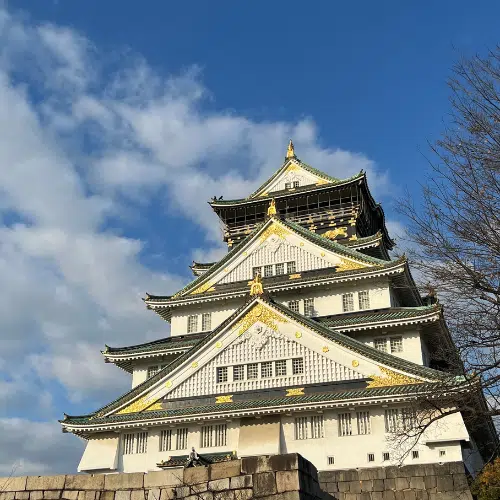10 Tips for Traveling to Japan For the First Time [2023]
This post may contain affiliate links, which means I’ll receive a commission if you purchase through my link, at no extra cost to you.
Japan is a beautiful country with friendly people who want to help you, but even knowing that, it’s best to go into your trip having some basic ideas of what to expect and coming prepared. With that in mind, I’ve condensed everything I learned in the 8 days of our trip (+ the 8 days of rapid planning before we left!) into 10 key tips. Let’s get into it:
1. Timing your trip
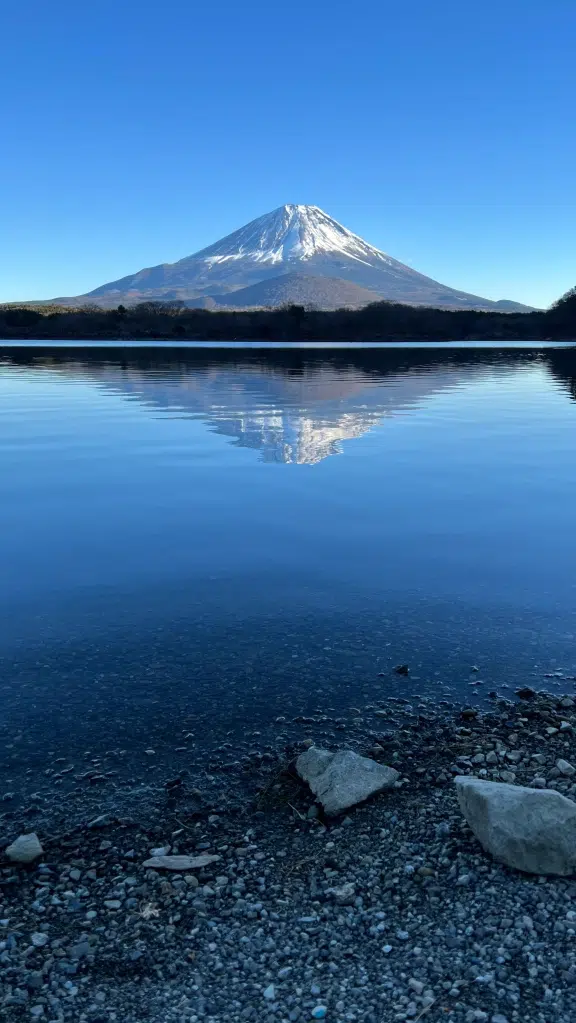
Japan is a large country, covering over 2,300 miles north to south. This means that the weather can vary a lot depending on when you want to go. Think through what you want to see and do to help narrow down the optimal dates. If you want to see Mt. Fuji, December and January offer the best chance of the mountain being visible, but if you want to climb Mt. Fuji, you have to go in July and August. Cherry blossoms are in bloom in the spring, ski resorts are open in the winter, etc. We had multiple guides warn us not to visit Tokyo in the summer because it’s extremely hot, humid, and miserable. Japan is really a year-round destination depending on which areas you visit, so if your schedule isn’t flexible, build your itinerary around the season you’re traveling.
The downside to Japan being so large (and different areas being optimal at different times) is that it’s impossible to see everything in just a week or so. You’ll likely need to visit Japan multiple times to truly appreciate all it has to offer. I already can’t wait to go back one day.
2. Japan is more “normal” than the media has made it out to be
I feel like so much of Japanese culture has been stereotyped in American media and it really gave me a false understanding of the country. Yes, anime, robots, etc. can be found in the country, but they’re not everywhere – if you want to find them you will need to seek them out.

Transportation was just about the same as anywhere else in the world, except just a little nicer (always on-schedule, cleaner, safer). If you don’t want to eat Japanese food every day, there are plenty of options for cuisines from around the world. I was also expecting much crazier vending machines, but the vast majority just sold drinks (though they did sell both hot and cold beverages which was cool). We did see one vending machine that sold cake in a can and another that sold cigarettes, but they were more of a novelty than the norm.
Unlearning stereotypes and seeing a culture for what it really is (rather than what I’ve been conditioned to believe) is part of why I love travel so much!
3. Learn to use chopsticks
If you don’t know how to use chopsticks, find a set and practice before your trip to Japan (consider this your excuse to order takeout tonight). I don’t think I was handed a fork at any point in our 8 days. Thankfully, I am decent enough with chopsticks this was never a problem (we also did bring these sporks with us just in case but never ended up using them).
On that note, chopsticks make amazing souvenirs! We picked up 4 sets of chopsticks on our trip – they’re really works of art. You can find chopsticks in all price ranges and they take up very little space in your luggage.
4. The language barrier isn’t as difficult as you’d think
Due to Japan’s isolationist history, the country is very insular and English isn’t as commonly spoken as most countries. Add in that there’s no way I can read the kanji and I was really worried we’d struggle with the language barrier – I’d actually never been to a country that didn’t use the Latin alphabet!
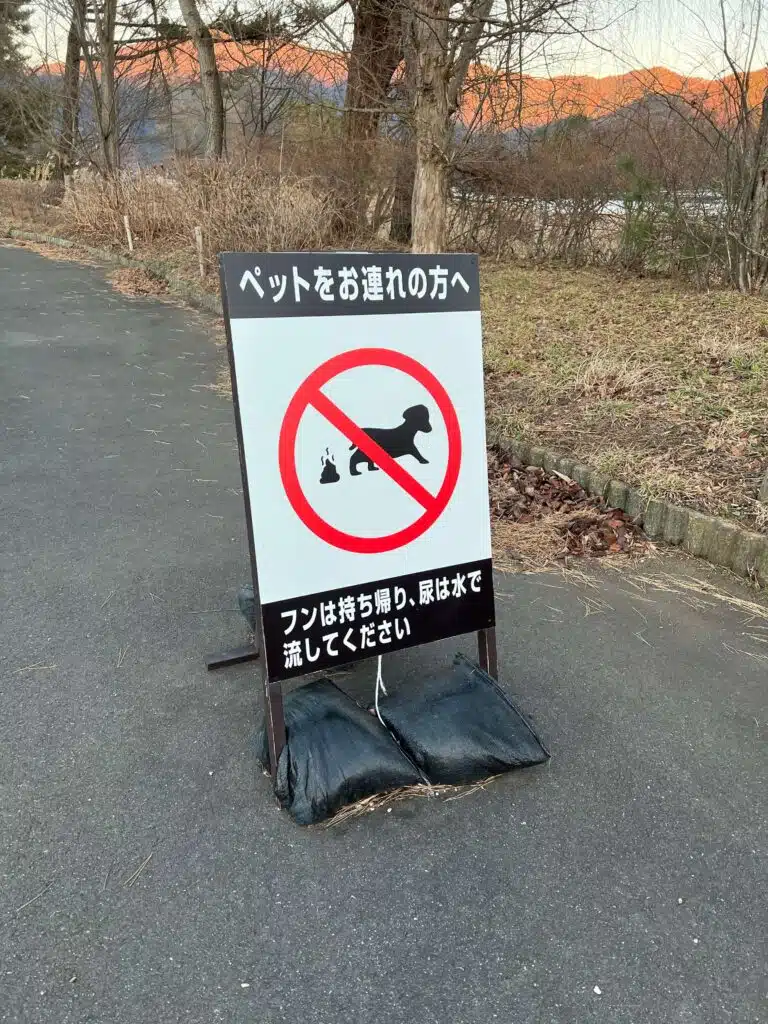
Luckily, this fear was quickly alleviated as I found much more English (or at least Latin spellings of Japanese words) than I was expecting. The train stations had signs I could read and even made announcements for each stop in English. If English isn’t offered, there are plenty of pictograms that you can pretty easily get the gist of what they’re trying to tell you. You’d also be surprised how much you can get across to someone with just hand gestures.
We actually struggled the most anytime we tried to use Google translate. I’ve had great luck with the app in the past, but it was pretty much useless in Japan. Luckily, many restaurants had English menus and most restaurants had “food samples” out front, which are wax or plastic replicas of the food offered inside – they are so realistic it’s crazy!
5. Pack your walking shoes
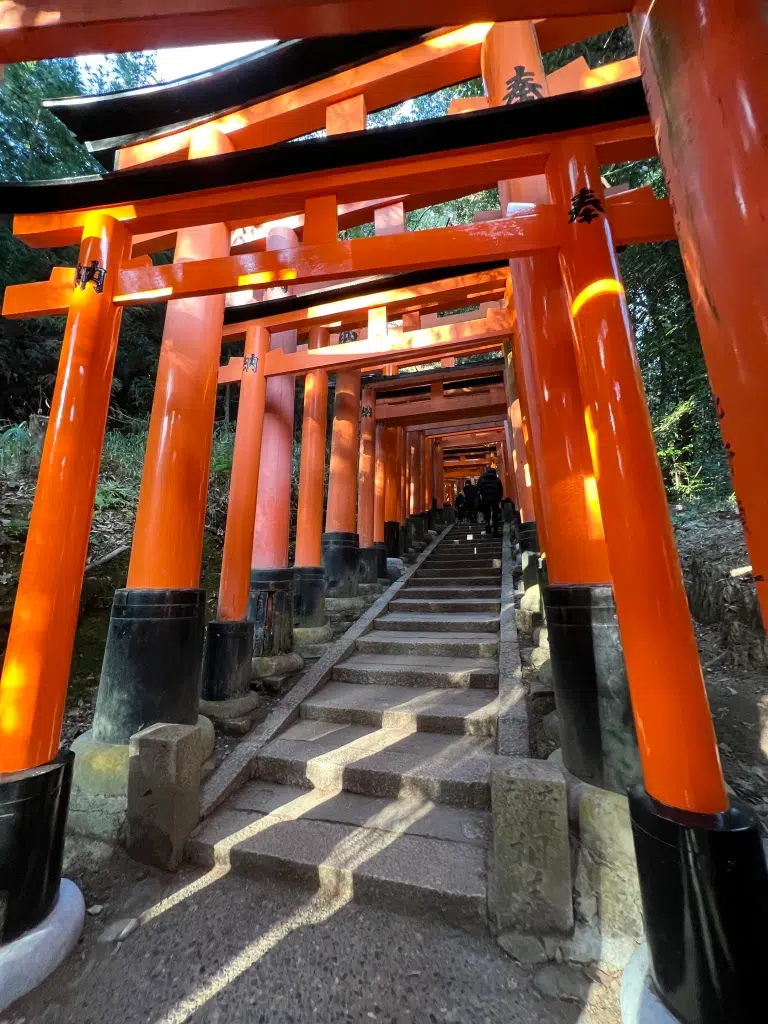
What I didn’t know before visiting is that Tokyo is the biggest city in the world. All those people means the city is very spread out and you end up doing a LOT of walking. Like a lot a lot. We averaged 20,000 steps per day during our 8-day trip. There’s also plenty of stairs to climb and in Kyoto and Osaka we found ourselves hiking up a few small mountains too.
On that note, Japan is not the place to pack your cutest shoes, because let’s face it there’s no way those are the most comfortable (if that’s the case I want the link). I wore my hiking boots the majority of the time and while my feet were inevitably tired at the end of each day, they held up much better than they would have in any other shoe. I also never had to take my shoes off anywhere, so it didn’t matter that my shoes weren’t slip-on (if you go to an onsen or stay at a ryokan this would likely be different).
Also, because the cities are so spread out, be prepared for it to take much longer to get anywhere than you expect. Don’t overbook yourself because you’ll never make it from one place to another in time if you’re on a strict schedule. You can easily clock 1000 steps just going between trains at large stations and that transit takes time – you’ll also probably get lost a few times so factor extra time in for that.
6. Don’t bring more luggage than you can carry
As mentioned, there’s a lot of stairs and escalators and elevators aren’t always where you need them to be, especially outside of Tokyo. If you’re changing hotels every couple of days like us, you’re going to be carrying your luggage up and down many steps, so it’s important you pack light! We each brought a backpack and a carry-on suitcase and it was very manageable.
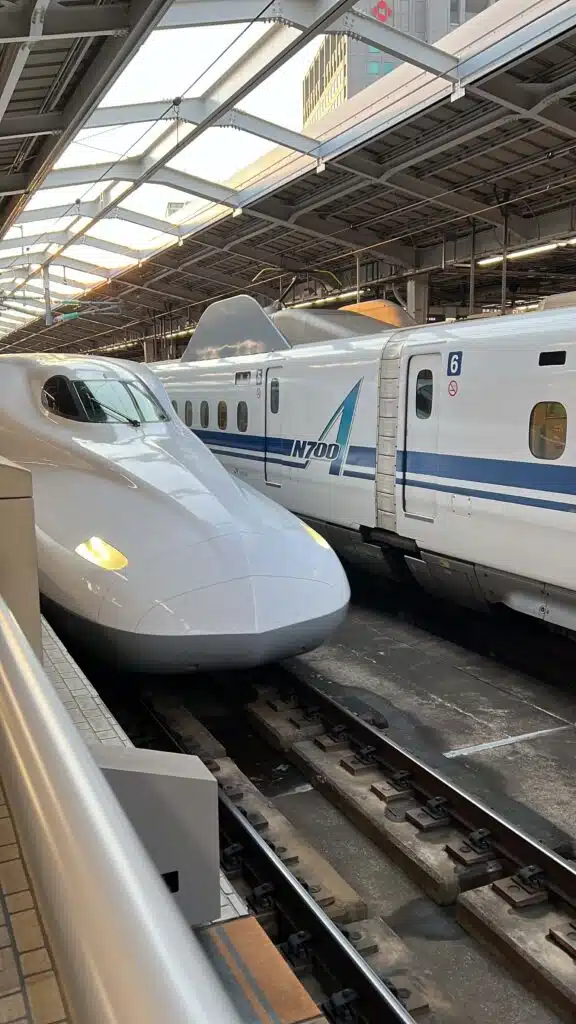
Additionally, if you’re planning to ride the Shinkansen (bullet train), you have to make a reservation for the “oversized luggage area” – the seats at the very front and back of each car – if you have anything bigger than a carry on. During busy times, these may be hard to get. There are size limits on these trains and if your suitcases are too big, you may have to use a separate service to ship your bags to your destination.
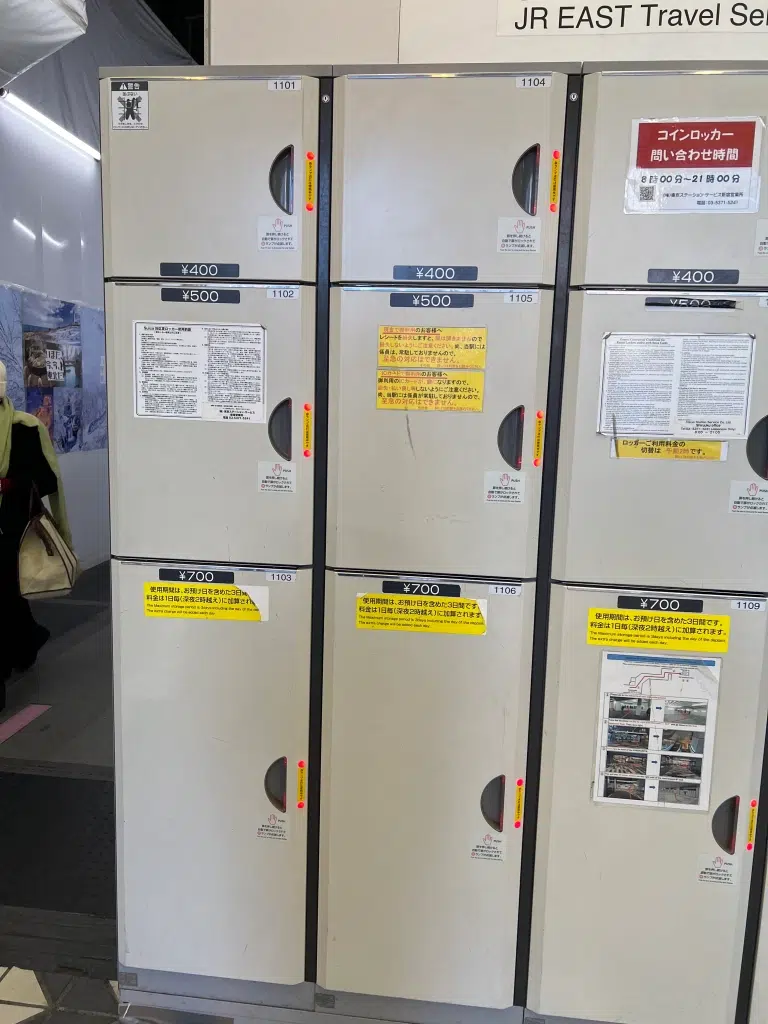
The other advantage of smaller luggage is that it fits in coin lockers. Coin lockers are found in pretty much every train station (+ we saw some on the streets too) and are important because not every hotel in Japan will let you drop your bags off before check in time. These lockers are pretty inexpensive (~300-700 yen depending on the size), but if your suitcase is too big, you won’t be able to use them (and then you’re stuck lugging a massive suitcase around all day).
7. What to bring
To pack light, it’s important to narrow down your luggage to the essentials. Here’s a quick rundown of the items you may not consider:
- Cash – for an incredibly modern country, Japan still relies on cash much more than in the US. You need cash to buy train tickets or top up your metro card. We ended up spending about $600 (~75,000 yen) in cash over 8 days (for 2 people). However, by the end we were just using cash to try to get rid of what we’d brought. Most places (restaurants, shops, etc.) did take card – I think Covid likely helped spur this change as so many articles that were written before 2020 harp on how much you need cash in Japan. I think bringing about $25/day/person (~3200 yen) is about the right amount. Not every ATM accept US debit cards, so we got money ahead of time to be safe, though we brought over 125,000 yen and that was definitely too much!
- Coin purse – You definitely need something to hold your coins because you will end up with a lot of them very quickly. Japan uses coins for denominations below 1000-yen (~$7), so coins can be worth a lot and you don’t want to lose them. Additionally, some coin lockers only take 100-yen coins, so hold on to those! The really small coins like the 1- and 5-yen coins aren’t accepted by machines, so use them when you are in a shop.
- Hand towel– due to the pandemic, most hand dryers in public restrooms are turned off, so bring a hand towel (or at least some hand sanitizer) with you. I did find some hand dryers that worked, but it was very hit or miss. On the topic of public restrooms, they are very clean, free, and easily accessible – you can always find them in train stations, but sometimes they are before the ticket machines and other times after so watch out!
- Plastic bags – despite being an incredibly clean country, there are not many trash cans available after they were removed following terrorist attacks in the 1990s. It’s good to keep a couple plastic bags on hand to carry your trash around in until you can find a place to dispose of it. We only had to do this 2 times on our trip, but the bags came in handy!
One surprising thing I DIDN’T need to pack was a travel converter. Japan actually uses the same outlets as the United States, but most outlets are only 2 prongs, not 3. I didn’t bring any devices with 3 prong cords, but I’d recommend a converter just in that case. You might want an extension cord to plug in multiple devices, as some hotels only have 1-2 outlets.
8. Buy the JR pass
The JR Pass is a rail pass only available to foreigners. It also must be purchased in advance (which made me nervous because our trip was so last minute). You can buy them in 7-, 14-, or 21-day intervals. Our trip was 8 days, so our pass ended on our 2nd to last day.
I purchased the JR Pass online and when we arrived in Tokyo, we picked it up from the JR office at the train station at Narita Terminal 1. All I had to do was show our confirmation email and our passports. The actual JR pass basically just looks like a train small train ticket and would be pretty easy to lose, so make sure you have a strategy to always keep track of it – ours was that I always kept them in a certain pocket in my coat and after we scanned them, I took Thomas’s back from him and immediately put it back in the same pocket every time. Even with this trick I was constantly worried about losing them!
When I purchased the JR Pass, I had thought they were only good for the Shinkansen (bullet trains), but it turned out they were valid for some local trains as well, so we definitely got our money’s worth out of them. However, if you’re not taking at least 2 trips on the Shinkansen, it may not be worth it, so make sure to price it out. When buying your JR Pass, you’ll see options for the regular cars and the green “premium” cars – the regular cars were plenty sufficient and the green ones didn’t look like a huge upgrade, so I’d save your money here.
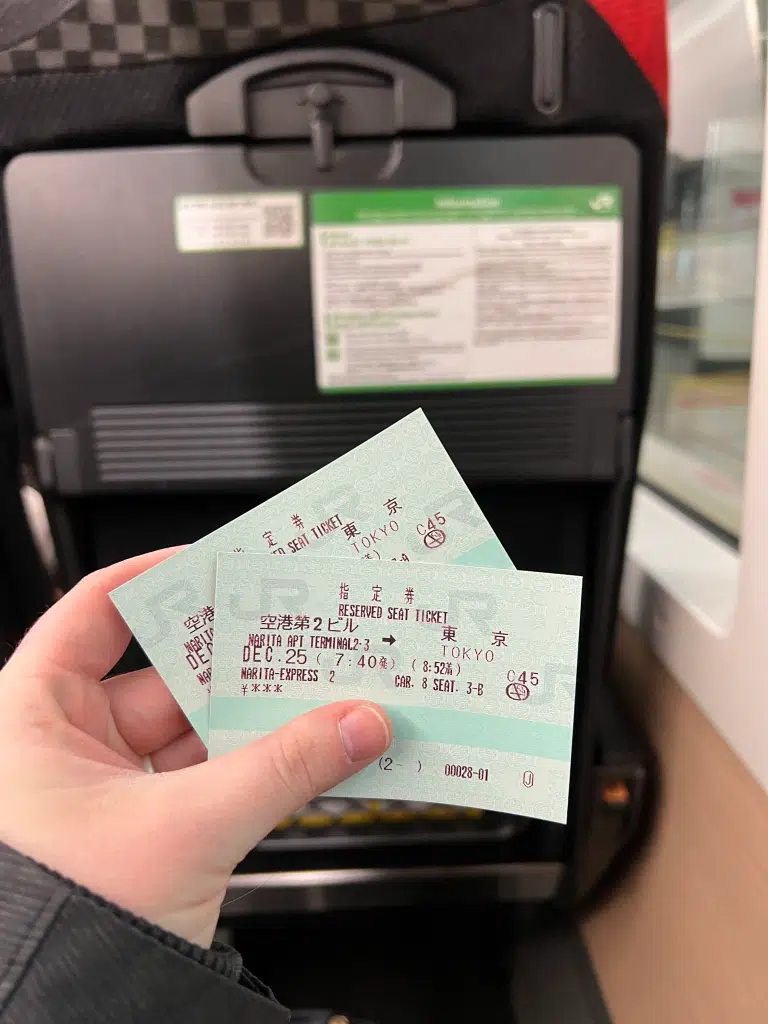
If you’re traveling at peak times, make sure to book seats for trains in advance. This can be done online or in person at a JR office in a train station. If you reserve online, just make sure to pick up the physical ticket with your seat assignment on it. On the Shinkansen, there are also a few cars for those without reservations, though it’s best not to rely on these unless you’re departing from the first stop on the route (otherwise they may all be taken by the time the train gets to you).
Side note on trains in Japan: there are multiple companies that control the trains, so you may need tickets for different lines. We didn’t want to deal with the hassle of local passes and topping them up, so we opted to just use the JR Pass as much as we could and bought individual tickets for any other trains we took.
9. Masks are everywhere, both indoors and outdoors
Along with several other Asian countries, Japan has had a mask-wearing culture long before the pandemic hit and though you may be used to no longer wearing a mask routinely at home, you’ll definitely be wearing them a lot here. Anytime we were indoors we made sure to wear a mask, as well as whenever we were in crowded outdoor areas. This practice really goes beyond whatever your beliefs about Covid and masks are and extends to respecting other cultures – you’re a visitor in Japan, after all.
We each brought a box of 20 disposable masks for the 8-day trip and used just over half of them. Interestingly, we were required to wear masks on our flight from Los Angeles to Tokyo but not on our flight from Tokyo to Montreal – I think it has to do with the destination country’s policies.
10. They drive on the left but don’t always walk on the left
The Japanese drive on the left-hand side of the road, so it would be intuitive to assume they always walk on the left side as well. Strangely, this isn’t always the case. Sometimes everyone would walk on the left, but other times the right. We couldn’t identify any clear reason for the flip flopping, but it wasn’t just a people problem – the signs on the ground in train stations went back and forth on which side to walk on too! My best suggestion here is to just do whatever those around you are doing and try to be mindful of other people.
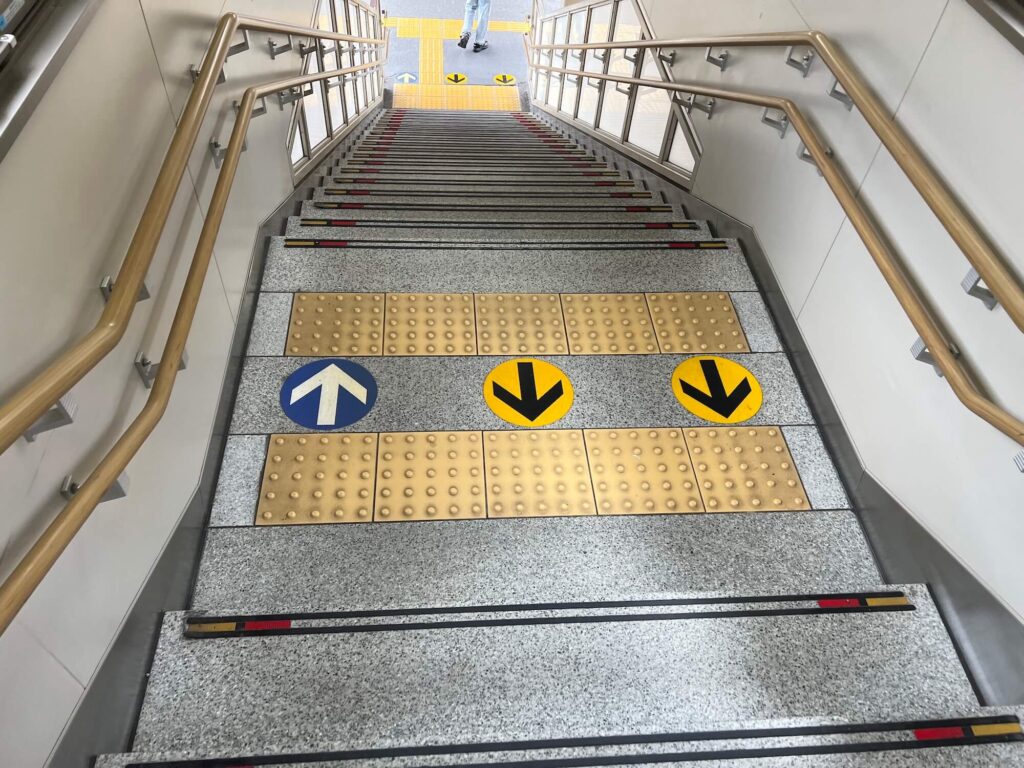
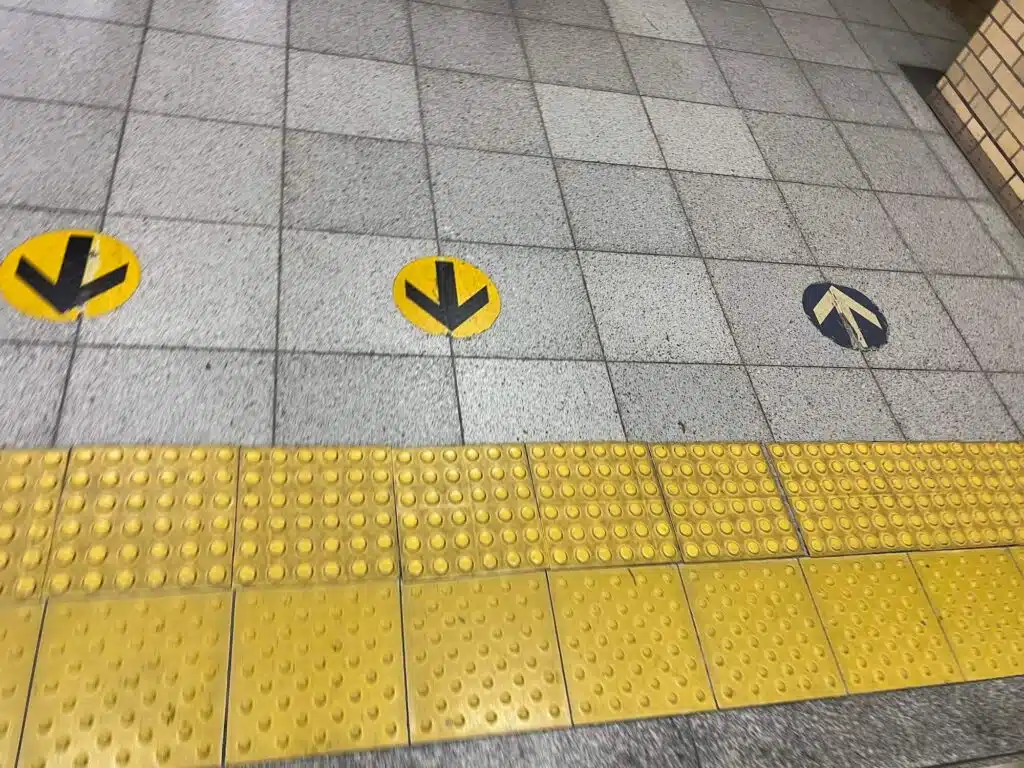
You may also like:

